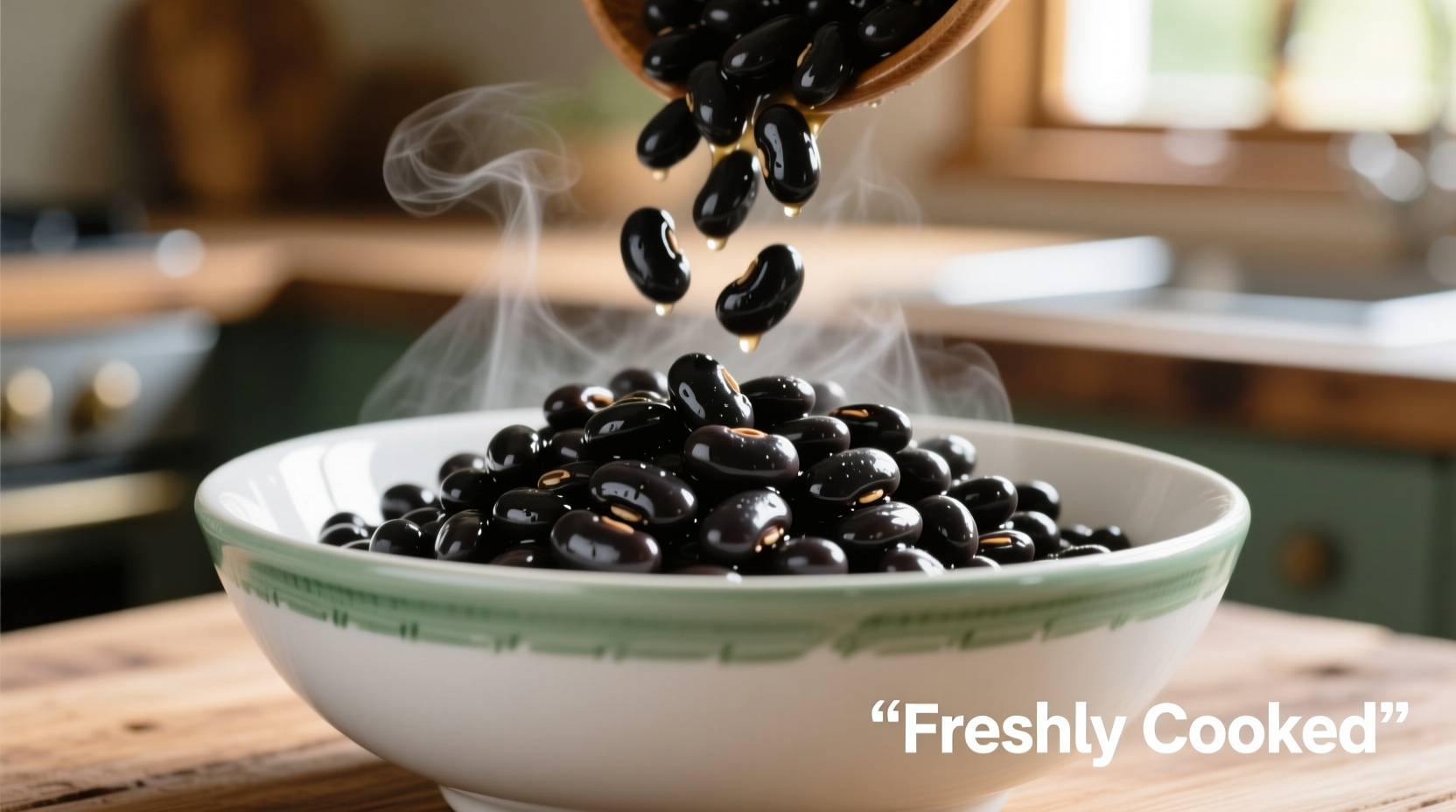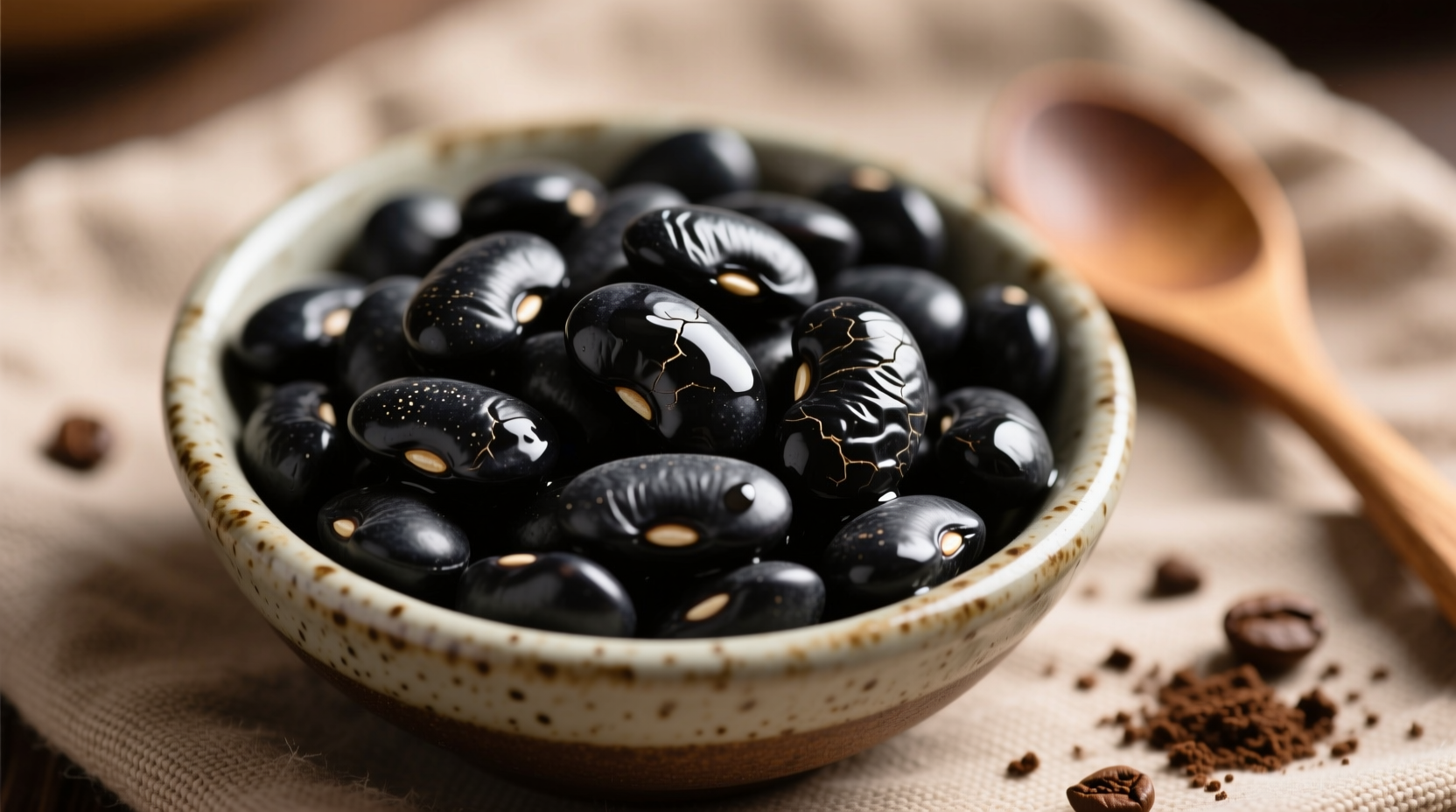Discover exactly what makes black beans a culinary staple across global kitchens. Whether you're meal prepping, exploring plant-based proteins, or trying authentic Latin American dishes, understanding black bean flavor profiles helps you create perfectly balanced meals every time.
The Distinctive Flavor Profile of Black Beans
Black beans deliver a complex yet approachable flavor that serves as an ideal canvas for creative cooking. Their earthy base note carries hints of cocoa and mushroom, while the subtle sweetness emerges most clearly when beans are slow-cooked with aromatics. Unlike stronger-flavored beans, black beans absorb surrounding flavors beautifully without overwhelming a dish.
The texture plays a crucial role in the overall sensory experience. Properly cooked black beans maintain structural integrity while offering a creamy interior. Their thin skins practically dissolve in your mouth, creating that signature smooth mouthfeel that makes them perfect for purees and dips. Undercooked beans feel chalky, while overcooked beans turn mushy and lose their delicate flavor balance.
How Black Beans Compare to Other Common Beans
| Bean Type | Flavor Profile | Best Culinary Uses | Texture When Cooked |
|---|---|---|---|
| Black Beans | Mild earthiness with subtle sweetness | Soups, salads, purees, Latin American dishes | Creamy interior, thin skin |
| Pinto Beans | Robust, earthy with chestnut notes | Burritos, refried beans, chili | Firm yet creamy |
| Kidney Beans | Meaty, dense flavor | Casseroles, stews, three-bean salad | Substantial bite, holds shape |
| Chickpeas | Nutty, buttery flavor | Hummus, salads, roasted snacks | Dense, slightly grainy |
Factors That Transform Black Bean Flavor
Several elements significantly impact how black beans taste in your finished dish. The cooking liquid serves as the flavor foundation—using vegetable broth instead of water adds depth, while acidic ingredients like tomatoes added too early can prevent proper softening.
Dried versus canned beans present noticeable differences. Dried beans cooked from scratch develop more complex flavors as they absorb the cooking liquid's nuances. Canned beans offer convenience but require thorough rinsing to remove the metallic aftertaste from the canning process. For best results with canned beans, simmer them for 15-20 minutes in fresh liquid with aromatics.
Traditional Latin American preparation methods reveal how cultural context shapes flavor development. The Cuban technique of cooking black beans with a strip of bacon or ham hock creates frijoles negros with rich umami depth, while Mexican preparations often feature epazote for its distinctive earthy notes that complement the beans perfectly.
Practical Cooking Applications for Perfect Flavor
Maximize black bean flavor in your kitchen with these professional techniques. Always soak dried beans for 8-12 hours before cooking to ensure even texture and reduce cooking time. When cooking, add salt only after beans have softened—adding it too early can toughen the skins.
For restaurant-quality results, build flavor layers by sautéing aromatics before adding beans. The classic sofrito base of onions, garlic, bell peppers, and cilantro creates a flavor foundation that permeates the entire dish. Finish with a splash of citrus—lime juice brightens earthy notes while orange juice enhances natural sweetness.
When making black bean soup, reserve a portion of cooked beans to puree separately before adding back to the pot. This technique creates a luxuriously creamy texture without overpowering the delicate bean flavor. For salads, toss cooled beans with a vinaigrette while still slightly warm to help them absorb flavors.
When Black Beans Shine (and When to Choose Alternatives)
Black beans excel in dishes where you want protein without overwhelming flavor. They're ideal for vegetarian burgers where stronger beans might dominate, and perfect for blending into brownies where their mild flavor won't interfere with chocolate notes. Their visual contrast makes them stand out in colorful salads and grain bowls.
However, certain applications call for different beans. For hearty chili that needs to stand up to bold spices, kidney beans provide better texture retention. When making traditional refried beans, pinto beans create the authentic flavor profile Mexican cuisine demands. Black beans' delicate nature means they break down more easily in long-simmered dishes compared to cannellini or great northern beans.
Understanding these context boundaries helps you make informed choices. Black beans work beautifully in Cuban frijoles negros but would create an unusual texture in British baked beans. Their mild flavor makes them versatile for both savory applications and surprisingly, in desserts where chocolate or coffee flavors dominate.
Nutritional Benefits That Complement Flavor
Beyond their culinary appeal, black beans deliver impressive nutritional benefits that enhance their value in your kitchen. A single cup provides 15 grams of protein and 15 grams of fiber, making them a powerhouse for plant-based diets. The USDA FoodData Central database confirms they're rich in folate, iron, and magnesium—nutrients that support energy metabolism and heart health.
Proper storage maintains both flavor and nutrition. Store dried beans in airtight containers away from light for up to one year. Cooked beans keep for 5 days in the refrigerator or up to 6 months frozen. For best flavor retention when freezing, store beans in their cooking liquid. Always inspect dried beans before cooking, removing any stones or damaged beans that could affect texture and taste.

Perfecting Your Black Bean Experience
Mastering black bean preparation transforms ordinary meals into culinary experiences. Start with high-quality beans—look for uniform color and absence of cracks. When cooking from dried, add a piece of kombu seaweed to the pot; it contains enzymes that help break down complex sugars, reducing digestive discomfort while enhancing flavor complexity.
For the most authentic Latin American flavors, explore regional variations. In Brazil, black beans form the base of feijoada with smoked meats, while in Puerto Rico they're cooked with coconut milk for a tropical twist. These cultural preparations demonstrate how the same ingredient adapts to local tastes while maintaining its essential character.
Whether you're creating a simple weeknight meal or an elaborate feast, understanding black bean flavor helps you make intentional choices. Their mild earthiness serves as a culinary blank canvas, ready to absorb the flavors you build around them while contributing their own subtle sweetness and creamy texture.











 浙公网安备
33010002000092号
浙公网安备
33010002000092号 浙B2-20120091-4
浙B2-20120091-4